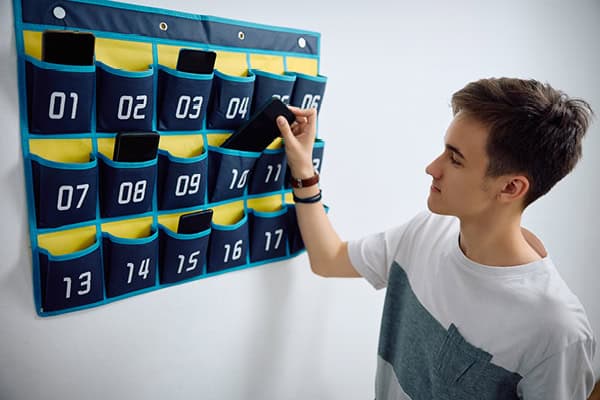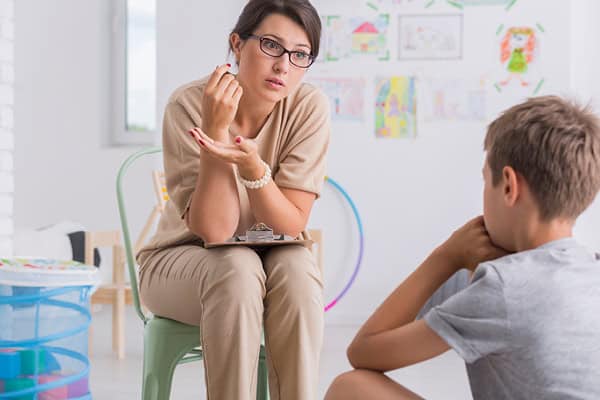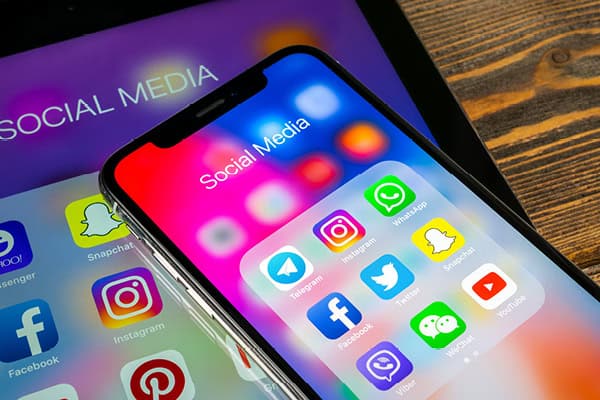When KIPP NYC College Prep restricted smartphone use in class, AP test scores increased, grades bounced back to pre-pandemic averages, and attendance at sporting events and other activities jumped by 50 percent, according to Bloomberg News.
At a high school in upstate New York that banned mobile phones, a student was constantly reaching for her nonexistent device and grabbing air. Hallways rang with the sound of kids trying to smash locks to get their devices. At another school in the Bronx, students plotted a protest.
Eventually the symptoms faded, and behavior changed. At Newburgh Free Academy high school, classroom engagement improved when students resigned themselves to phone-less schooling. The lunchroom got a lot noisier as kids switched to playing cards instead of watching TikTok videos.
These are the potential positives for students in New York City, the nation’s largest district, after Chancellor David Banks said he plans an across-the-board ban on mobile phones for more than 1.1 million public-school students at 1,800 campuses. Gov. Kathy Hochul has said she also intends to propose a statewide ban in schools during the 2025 legislative session.
New York City schools had been left to set policies on their own since 2015, when Mayor Bill de Blasio ended a phone ban initially put in place by his predecessor, Michael Bloomberg.
Zach Rausch, lead researcher for Jonathan Haidt’s bestselling book, “The Anxious Generation” — which looks at technology’s effects on mental health — says bans like the one planned by New York City are one of the most effective ways to get addictive devices away from children.
“Kids are feeling isolated, lonely, disconnected. They’re also performing poorly in schools,” says Rausch, an associate research scientist at the NYU Stern School of Business. “A large reason for both of these problems in the infusion of addictive tech in schools.”
Already, one-third of public schools in New York City require students to place their phones in lockable pouches made by the company Yondr, according to reporting from Chalkbeat. They get their device back at the end of the day, releasing them by using a magnetic tool stationed at school exits.
Schools that ban devices without requiring pouches also sometimes struggle to enforce the rules. Salma Baksh, a recent graduate of Forest Hills High School in Queens, noticed the toll it took on teachers to police phone usage by the school’s 3,500 students.
“If they confiscate it, they’ll be viewed negatively by all the other students,” says Baksh.
About 70 percent of high school teachers and one-third of middle school teachers say that students being distracted by cellphones is a major problem in their classrooms, according to the Pew Research Center. Still, some kids and parents are worried about students not having their phones in an emergency. When a gunman went on a shooting spree at a school in Parkland, Florida, in 2018, students inside the school sent texts to parents about what was happening.
Education safety experts note, however, that devices can make emergencies worse, like when notifications distract students from hearing important instructions. Sometimes, parents show up at a school during an emergency, contributing to chaotic situations.
For schools that do pursue a ban, Rausch notes that it doesn’t have to feel like a punitive measure. Instead, it can be tied to other new policies, like more time devoted specifically to recreation.
“The work of childhood is to play — and we need to do a ton of it,” Rausch says. “We’re gonna say seven hours of the school day is going to be focused on paying attention to other human beings in person with each other. That that will have a dramatic impact on young people’s mental health.”
Bloomberg News





